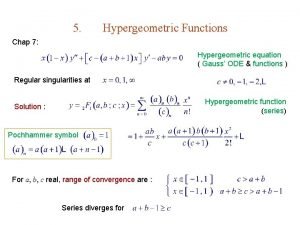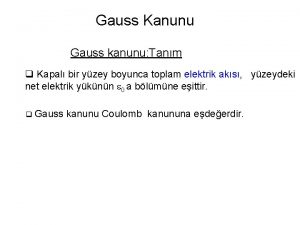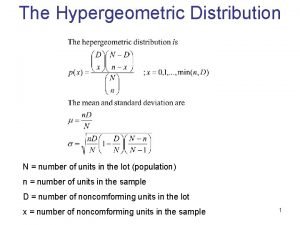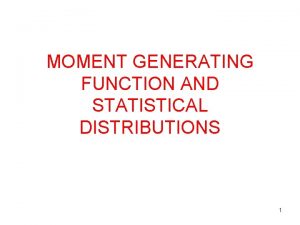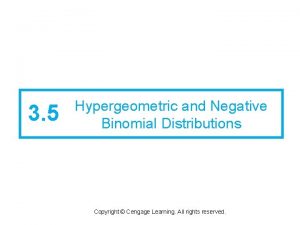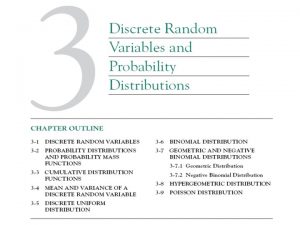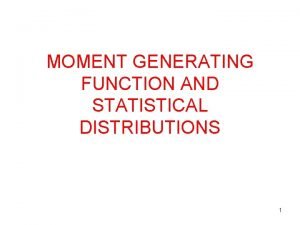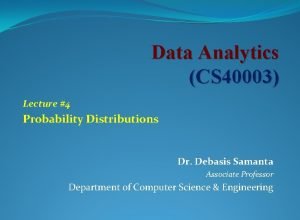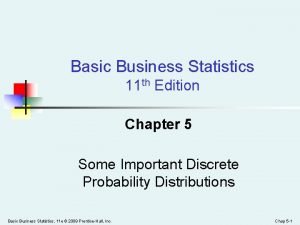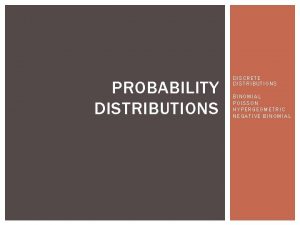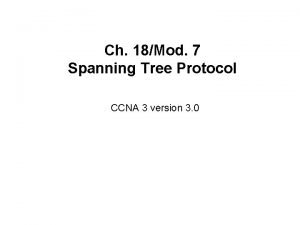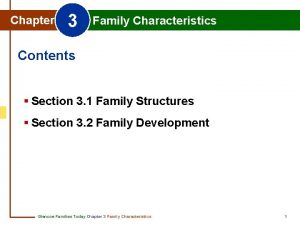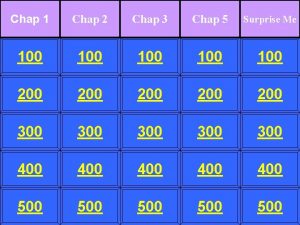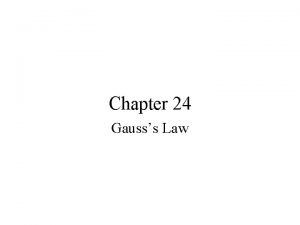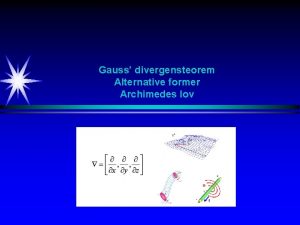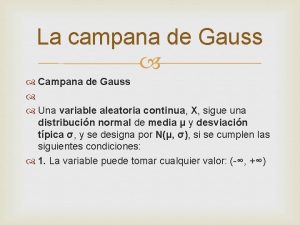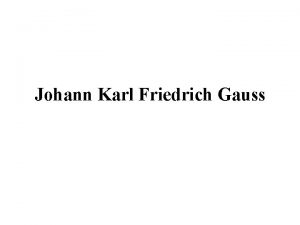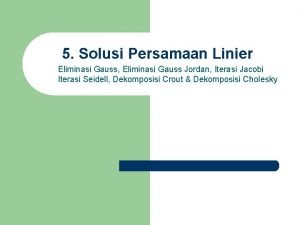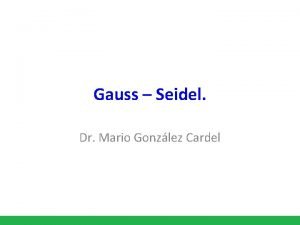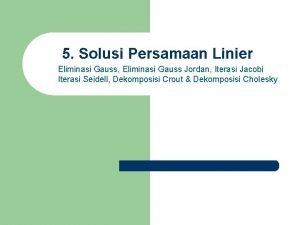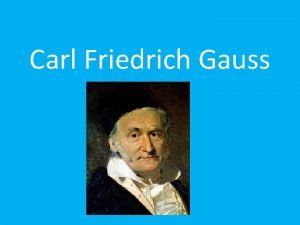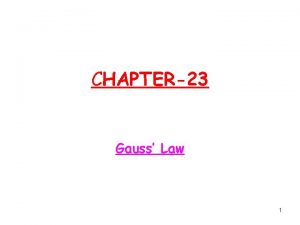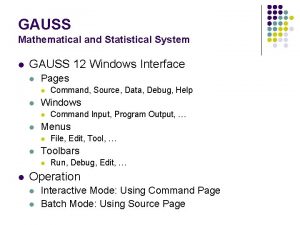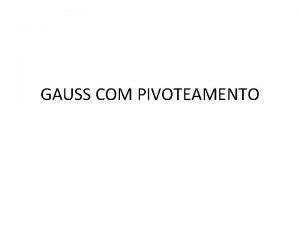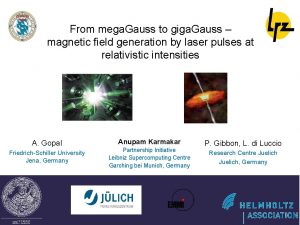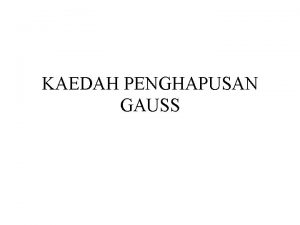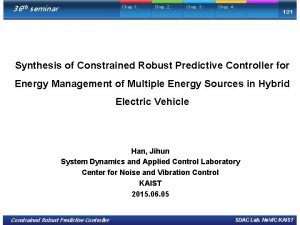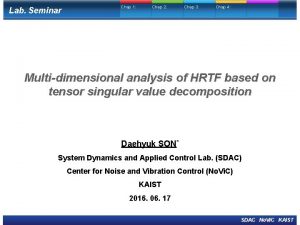5 Hypergeometric Functions Chap 7 Hypergeometric equation Gauss






















- Slides: 22

5. Hypergeometric Functions Chap 7: Hypergeometric equation ( Gauss’ ODE & functions ) Regular singularities at Hypergeometric function (series) Solution : Pochhammer symbol For a, b, c real, range of convergence are : Series diverges for

Properties Sum terminates if 2 F 1 includes many elementary functions. E. g. 2 F 1 = polynomial

2 nd Solution, Alternative ODE § 7. 6 : 2 nd Solution : c = integer Alternative ODE : y not independent of additional logarithm term required 2 F 1 ( a, b ; c ; x)

Contiguous Function Relations

Hypergeometric Representations

6. Confluent Hypergeometric Functions Confluent Hypergeometric eq. Singularities : regular at irregular at Solution : For a, c real, series converge for all finite x. Sum terminates if E. g. 1 F 1 = polynomial

2 nd solution : Standard form : Alternate ODE :

Integral Representations Techniques for verifying integral representations : 1. g(x, t) or Rodrigues relations. 2. Expand integrand into series & integrate. 3. (a) As solution to ODE. (b) Check normalization.

Confluent Hypergeometric Representations

Further Observations Advantages for using the (confluent) hypergeometric representations : 1. Asymptotic behavior or normalization easier to evaluate via the integral representation of M & U. 2. Inter-relationship between special functions becomes clearer. Self-adjoint version : Whittaker function Self-adjoint ODE : 2 nd solution :

7. Dilogarithm Usage : 1. Matrix elements in few-body problems in atomic physics. 2. Perturbation terms in electrodynamics.

Expansion Poly-logarithm

Analytic Properties Branch point at z = 1. Conventional choice : Branch cut from z = 1 to z = . with principal value : For series converges & is real. For series diverges but integral is finite & complex ( analytic continued ). For series diverges but integral is finite & real ( analytic continued ).

Since the only pole is at z = 0, the integral is independent of path as long as it does not cross the branch cut. For the path colored blue in figure, On small circle, set On slanted line, set branch cut Mathematica RHS of fig. 18. 8 & eq. 18. 159 are not allowed since the path crosses the branch cut.

Properties & Special Values generates Li 2 for all x from those in | x | 1/2. e. g. Proof : ¢ both sides & find identity. Set z = 0 or 1 to determine const.

Example 18. 7. 1. Check Usefulness of Formula Question: Are the individual terms real? I real & converges if Li 2(x) is real for x < 1 is real both Li 2 terms are real.

8. Elliptic Integrals Example 18. 8. 1. Period of Simple Pendulum Period

Definitions Elliptic integral of the 1 st kind Complete Elliptic integral of the 1 st kind

Elliptic integral of the 2 nd kind Complete Elliptic integral of the 1 st kind

Series Expansions Ex. 13. 3. 8 Ex. 18. 8. 2

Fig. 18. 10. K(m) & E(m) Mathematica

Limiting Values Integrals of the following form can be expressed in terms of elliptic integrals. E. Jahnke & F. Emde, “Table of Higher Functions”
 Chap chap slide
Chap chap slide Eliptical integral
Eliptical integral Gauss vs gauss jordan
Gauss vs gauss jordan Gauss
Gauss Hypergeometric distribution table
Hypergeometric distribution table Moment generating function of binomial distribution
Moment generating function of binomial distribution Binomial probability distribution
Binomial probability distribution Hypergeometric distribution
Hypergeometric distribution Negative binomial distribution
Negative binomial distribution Moment generating function of geometric distribution
Moment generating function of geometric distribution Hypergeometric distribution definition
Hypergeometric distribution definition Standard deviation formula for poisson distribution
Standard deviation formula for poisson distribution Binomial poisson and hypergeometric distributions
Binomial poisson and hypergeometric distributions Standard deviation of hypergeometric distribution
Standard deviation of hypergeometric distribution 패션 chap 1
패션 chap 1 Passion chap 6
Passion chap 6 Bank run chap 11
Bank run chap 11 Assumptions of clrm gujarati
Assumptions of clrm gujarati Is small skinny and black or brown in colour
Is small skinny and black or brown in colour Kstn chap 18
Kstn chap 18 Characteristics of extended family
Characteristics of extended family The origin of species - chapter 24 manga buddy
The origin of species - chapter 24 manga buddy Needs/wants that has been satisfied
Needs/wants that has been satisfied

